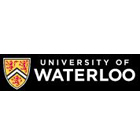- News and articles
- Find usIDP AustraliaIDP BahrainIDP BangladeshIDP CambodiaIDP CanadaIDP ChinaIDP EgyptIDP GhanaIDP Hong KongIDP IndiaIDP IndonesiaIDP IranIDP JordanIDP KenyaIDP KoreaIDP KuwaitIDP LebanonIDP MalaysiaIDP MauritiusIDP Middle EastIDP NepalIDP New ZealandIDP NigeriaIDP OmanIDP PakistanIDP PhilippinesIDP Saudi ArabiaIDP SingaporeIDP Sri LankaIDP Taiwan, ChinaIDP ThailandIDP TurkeyIDP UAEIDP VietnamIDP Corporate
- Social
- English
- Where we operate
- Courses
- Scholarships
- IELTS
- About IDP
- Student Essentials
- News and articles
- Find us
- Find us
- Find nearest IDP offices
- IDP Australia
- IDP Bahrain
- IDP Bangladesh
- IDP Cambodia
- IDP Canada
- IDP China
- IDP Egypt
- IDP Ghana
- IDP Hong Kong
- IDP India
- IDP Indonesia
- IDP Iran
- IDP Jordan
- IDP Kenya
- IDP Korea
- IDP Kuwait
- IDP Lebanon
- IDP Malaysia
- IDP Mauritius
- IDP Middle East
- IDP Nepal
- IDP New Zealand
- IDP Nigeria
- IDP Oman
- IDP Pakistan
- IDP Philippines
- IDP Saudi Arabia
- IDP Singapore
- IDP Sri Lanka
- IDP Taiwan, China
- IDP Thailand
- IDP Turkey
- IDP UAE
- IDP Vietnam
- IDP Corporate
- Social
- Language Switcher
- IDP Education /
- Colleges and Universities /
- Canada /
- University of Waterloo /
- Bachelor of Architectural S...


Location
Canada
Qualification
Bachelor Degree with Honours
Fees
CAD73000
(2025)
Duration
4 Year(s)
Next intake
08 September 2025
Entry Score
6.5
IELTSCourse info
The visual and digital media sequence acts as a support for the design studio, introducing multiple methods of visualization that act as communicative, analytical and generative tools for architecture. These courses build aptitude and understanding in the use of architectural tools and techniques, from hand-drawing and drafting in two dimensions to advanced three-dimensional digital modeling, visualization and fabrication. At the upper levels of the curriculum and within elective coursework this focus area introduces a range of courses in traditional visual media as well as an expanded series of digital offerings in areas such as parametric design, rapid prototyping using CADCAM technologies, and interaction.
- Scholarships View all scholarships
- Internships
Entry requirements for University of Waterloo
Internet-based TOEFL (iBT) - 90 Overall (25 writing, 25 speaking)
IELTS Academic - 6.5 Overall (6.5 writing, 6.5 speaking, 6.0 reading, 6.0 listening)
International Baccalaureate (IB) - Mathematics: Analysis and Approaches and Physics (HL recommended), minimum 4 in each. HL or SL English A, minimum 4. Total 32. Qualified applicants will be invited to complete an English precis-writing exercise and to submit a portfolio.
Ontario students: six Grade 12 U and/or M courses including
English (ENG4U) (A minimum final grade of 75% is required)
Advanced Functions (A minimum final grade of 70% is required)
Calculus and Vectors (A minimum final grade of 70% is required)
Physics (A minimum final grade of 70% is required)
Recommended: Grade 11 or 12 art courses, independent art studies, creative and cultural studies such as visual arts and history
Admission average: Individual selection from the mid-80s
Application Deadline
The application deadline isn't available Speak to an IDP counsellor for more detailed information
Further information
If you aren't eligible for the above entry requirements, you might ant to explore pathway options at University of Waterloo. If you want to find out more, speak to our counsellors.
THE World Ranking
163rd / 1250
THE World RankingWhat our students think
We’ve haven’t received any reviews for this institution yet.
Recommended for you
- Bachelor Degree
- Oshawa , Canada
- Next intake:09/2025
- Entry Score: IELTS 6.0
- CAD14884 (2025)
- Bachelor Degree
- Nelson , Canada
- Next intake:09/2025
- Entry Score: IELTS 6.0
- CAD13020 (2025)
- Bachelor Degree
- Castlegar , Canada
- Next intake:05/2025
- Entry Score: IELTS 6.0
- CAD13020 (2025)
- Bachelor Degree
- Abbotsford , Canada
- Next intake:05/2025
- Entry Score: IELTS 6.5
- CAD17184 (2025)
- Bachelor Degree
- Castlegar , Canada
- Next intake:05/2025
- Entry Score: IELTS 6.0
- CAD13020 (2025)
- Bachelor Degree
- North Vancouver , Canada
- Next intake:05/2025
- Entry Score: IELTS 6.5
- Bachelor Degree
- Surrey , Canada
- Next intake:05/2025
- Entry Score: IELTS 6.5
- CAD21368 (2025)
- Bachelor Degree
- Coquitlam , Canada
- Next intake:05/2025
- Entry Score: IELTS 6.5
- CAD19103 (2025)
Your action plan
Step 1
Shortlist your courses
Choose the best three courses you’re most likely to pursue.
Step 2
Check your eligibility
Get an instant in-principle offer for courses with the IDP FastLane tag.
Step 3
Apply through IDP Live
Fill out the form once and use it to apply to multiple courses.
How does IDP FastLane work?
With the FastLane 'Offer in Principle', you'll know in minutes if you'll be accepted!
Select an institution and course
Create your academic profile
Submit your application for an 'Offer in Principle'
Your chosen institution(s) will send you a decision in minutes!
Get ready to apply with an expert counsellor




